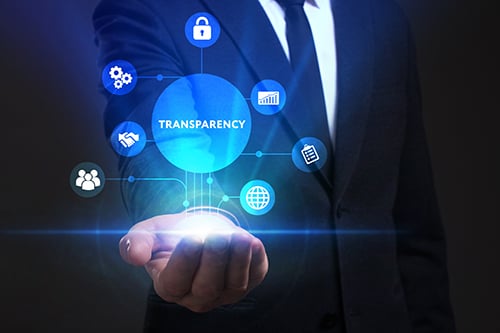
New CEO sets out GRI’s central role in the reporting landscape.
Is the ESG disclosure landscape congested, or is that a myth? Do sustainability reporting plans by the EU and IFRS compete, or do they fulfil different purposes? What’s GRI’s vision for a more effective — and transparent — global reporting system? And why should companies be accountable for the full range of their impacts on people and planet?
These are just some of the issues explored in A business case for environment & society, the first of a new series that will offer ‘The GRI perspective.’ Further issues covering topical themes will publish regularly during 2022.
Eelco van der Enden started as GRI CEO on January 1, 2022. Here he shares why GRI is leading the global debate on corporate accountability for sustainability impacts.
Question: The sustainability reporting landscape has been called the alphabet soup. Is that correct? What is GRI’s perspective?
Response: The broader landscape can be confusing, but companies should not let the myriad of ESG guidelines, raters, certifiers, and others distract them from fulfilling their transparency obligations. The reality is that there are only two sustainability reporting standards setters: GRI, for impacts on the economy, environment and people that meet the needs of all stakeholders, and SASB, for enterprise value disclosure for an investor audience.
GRI is, I believe, more relevant than ever before. Our standards bring multi-stakeholder credibility, challenging organizations to report in a way that reflects the full range of their impacts. A narrow financial focus cannot, for example, fully illuminate how a company safeguards human rights or mitigates climate change.
Question: The IFRS launched an International Sustainability Standards Board (ISSB) while the European Union is developing its own European Sustainability Reporting Standards (ESRS). Will this change the reporting landscape, and how will they intersect?
Response: These two developments are understandably getting a lot of attention right now. However, it’s important to understand their differences. First, the EU standards will cover the full spectrum of sustainability aspects, while IFRS are focused solely on the financial impact of sustainability issues on the company. Second, the ESRS will be mandatory for some 50,000 companies, whereas the ISSB standards will not come with enforceable capabilities.
At GRI, we see these developments as complementary rather than competing. We are already involved in the EU process as co-constructor of the ESRS, and we look forward to engaging with the newly formed ISSB. What’s important is that we move toward a strengthened two-pillar structure for corporate reporting — both financial and sustainability — with each on an equal footing.
Question: What does GRI bring to the table that others do not? And why do businesses even need to report beyond their financial impacts and obligations?
Response: Since we were established 25 years ago, multi-stakeholder ethos has been in our DNA. GRI enables businesses, investors, policymakers, employees, and civil society to engage in dialogue and make decisions that support inclusive sustainable development. We bring truly global, independent, and freely accessible sustainability standards that any company — large or small — can use to understand and communicate their impacts.
So far, over 10,000 companies choose to use the GRI Standards voluntarily because they understand that broad sustainability reporting, beyond enterprise value alone, is needed to achieve socio-economic and environmental cohesion. As more organizations accept that being fully open and transparent is also good for business, I am confident GRI’s global role will continue to grow.
Read The GRI perspective: A business case for environment & society for more on these important themes.


